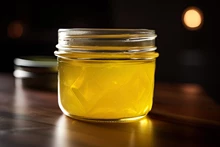
Wheat is one of the major food crops in India which mainly produced in northern states like Uttar Pradesh, Punjab, Haryana, MP, Rajasthan, Bihar, and Gujarat. Although it’s basically a Rabi Crop, Himachal Pradesh is the only state which cultivates this crop in both Rabi and Kharif season. As per the report, it is cultivated in the lower central and upper mountainous regions of Himachal Pradesh during the Rabi season while it is cultivated during the Kharif season in the very high mountain areas. In the year 2018-19, wheat was cultivated in an area of 3.19 lakh hectares with the production of 5.68 lakh tons.
Moreover, the productivity in the hilly state was 17.74 q / hector which is comparatively much lower than the productivity of its neighboring states (Punjab 45.96 q / ha and Haryana 44.07 q / ha) and much lower than the national average (30.93 q / ha). It is quite noticeable that farmers are still not aware of the modern techniques to get the maximum result from wheat. We are recommending some new techniques which can help the Indian farmers to get the highest yield during this Rabi season.
Let’s know some of the modern improved varieties of wheat and modern farming practices

Early sowing Seeds: - These types of seeds are suitable for utilizing the moisture left in the soil after harvesting maize. Moreover, it should be sown by mid-October.
VL 829- This variety has been approved for early sowing in unirrigated land in the lower and intermediate regions of the state and is an alternative to the variety VL 616. This variety is moderately resistant to yellow and brown rust. The protein content in this variety is up to 11.4 percent. Its grains are syrupy and semi-hard. This variety gives an average yield of about 30.2 q / ha.
Him Palam Wheat 1: This is a new variety of wheat that is resistant to yellow and brown rust. This variety gives an average yield of around 25–33 q / ha. Its grains are medium thick and white gold color and its chapati quality is good.
HS 542: This variety is an alternative to VL 829 in northern mountain regions. This variety has the ability to withstand brown rust. Its grains are harsh and mean and it is good for chapati. This variety gives an average yield of about 28.33 q / ha.

HP W155: This variety is suitable for timely sowing in unirrigated land in high mountain areas and in the uncovered and unfamiliar land of lower and intermediate areas of the state. This variety is resistant to yellow and brown rust. Its plants are dark green and the grains are thick and hard. This variety has the capacity to tolerate more fertilizers. This variety gives an average yield of 37-40 qt/ha and 28-30 qt/ha under the conditions of irrigated and rainy conditions.
HP W236: This variety has been approved for unirrigated and intermediate lowlands in the higher mountain areas. This variety is an antidote to Karnal bunt, yellow, rust and brown rust diseases. Its grains are syrupy, thick and semi-hard. This variety gives an average yield of about 33 q / ha in Barani areas.
HP W 211: This variety has been approved for the identified areas of Section-1. This variety is resistant to Karnal bunt yellow and brown rust and powderiness. It has the ability to bear fertilizers. Its grains are syrupy and hard. The quality of its chapati is also very good. Its average yield is about 35.40 q / ha.
HP W 249: This variety is approved for cultivation in the intermediate and unfamiliar areas of the state. This variety is suitable for yellow and brown rot and powdery diseases. It has the capacity to produce 25-26 quintals and 48-49 quintals/hectare in rainfed and irrigated areas.
HS 507: This variety is suitable for irrigated and uncultivated land in the lower and intermediate areas of the state. This variety is resistant to yellow and brown ratuas and scorching and Karnal bunt diseases. Its grains are Sharabati meaning hard and medium thick. This variety is ready to cook in 165 days. And gives an average yield of 25 q / ha and 47 q / ha in Barani and Sichit areas respectively.










